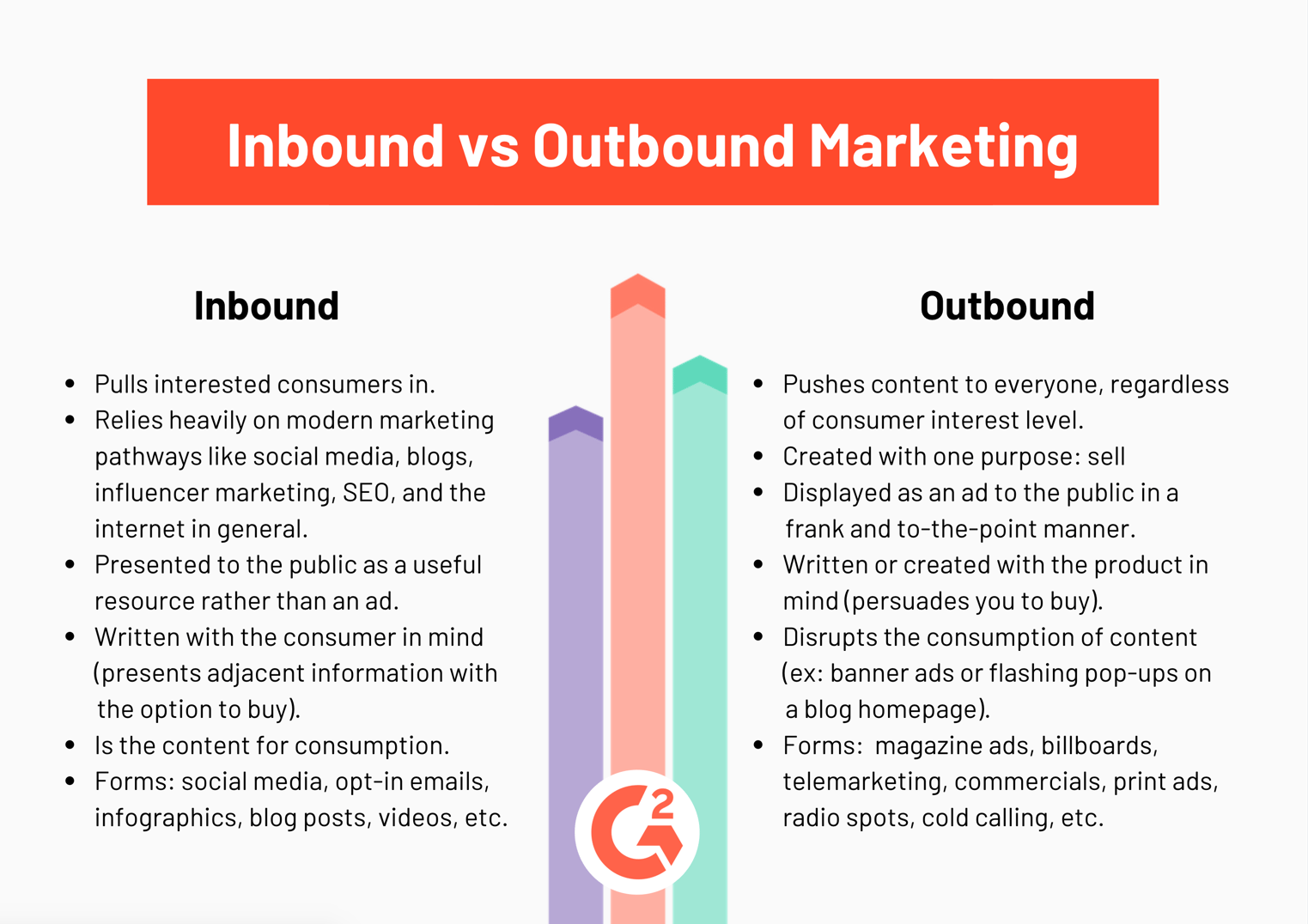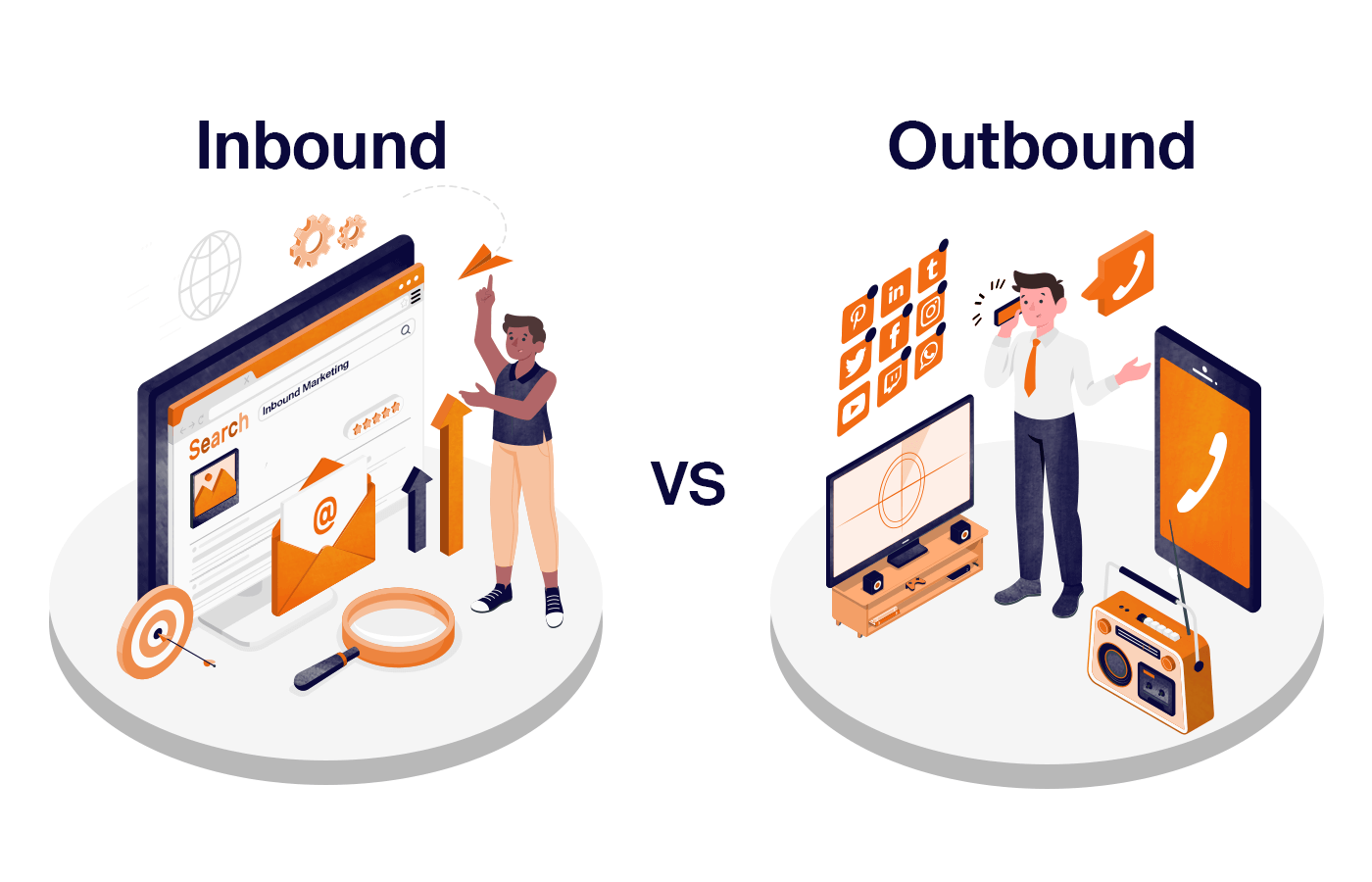On January 24, 2019, the Japan Tourism Agency held the “Youth Outbound Promotion Executive Meeting” to promote overseas experiences for young people.
This is because the number of people in their 20s leaving Japan decreased from 4.52 million in 1997 to 3.12 million in 2017.
When we think of “outbound” and “inbound,” we tend to think of them as words used in “tourism,” but in fact, they are also familiar terms in marketing strategy.
This time, we will explain the meanings of the words “inbound marketing” and “outbound marketing,” the advantages and disadvantages of each, and their relationship with BtoB.
What is “inbound marketing” and “outbound marketing”?
The major difference between “inbound marketing” and “outbound marketing” is their independence. Let’s take a look at each content below.

●“
Inbound marketing
” means seeking information from the customer side!
The inbound marketing method is described as a “pull” type.
It can be said to be a marketing method that allows customers to make inquiries and come into contact with the information disseminated through the company’s own website, seminars, etc. as owned media, and to provoke action on the customer’s side.
Since the main focus is on the customer side, they can “actively” select information on their own, and as a result, they are more likely to proceed to the next step.
.png?width=1200&name=Inbound Marketing Workflow - EN (1).png)
●“Outbound marketing” refers to selling products from the seller side!
The outbound marketing method is described as a “push” type.
It can be said to be a marketing method that prompts sellers to take action, such as TV commercials, advertisements hanging on trains, advertisements on web pages, exhibits at trade shows, telephone sales, and direct mail.
Since the main subject is the seller, from the customer’s perspective, it can be said that the information is delivered to them “passively” without their intention.

What are the advantages and disadvantages of “inbound marketing” and “outbound marketing”?
Which marketing method is better? Let’s look at each item.

●“Outbound marketing” has immediate effects
Because the subject of action is different, inbound marketing requires customers to become aware of the company’s continuous information dissemination, become interested in it, and look for it on their own and make inquiries.
It is rare to see immediate results; it requires continued use for a certain period of time.
However, in outbound marketing, the approach is made from the seller’s side, so if you successfully reach a customer who wants the product or service, it will lead to a direct purchase and be highly effective.

●Of course, “outbound marketing” has higher awareness!
In outbound marketing, especially TV commercials and advertisements that are targeted at an unspecified number of people, it is possible to make products and services known to all people without narrowing down the target.
As a result, it can be said that even those who are not interested will be aware of it, increasing overall awareness.
Inbound marketing, on the other hand, allows customers to find information, so the target audience is people who are already interested. From the perspective of increasing overall awareness, it can be said that the effect is weak.

●Inbound marketing is advantageous in terms of sustainability of effects
In terms of lasting effects, inbound marketing is more advantageous.
However, in outbound marketing, products and services are sold through advertisements, regardless of whether the customer is interested or not, so the customer ends up receiving information unintentionally.
Information that was originally received unconsciously will not be remembered and will be forgotten if the distribution stops.
On the other hand, with inbound marketing, there is no immediate effect, but if interested people seek out the information and become aware of it, it will definitely be received and the effects will last.

●In terms of favorability, “inbound marketing” has the upper hand
Outbound marketing, which can be described as a one-sided push, can deliver information even to people who are not interested, so there is a risk that the content of the advertisement may be perceived as “unpleasant.”
Also, the risk increases depending on the tool. Telemarketing, in particular, actually takes away the customer’s time, so if the timing is not right, there is even the possibility of complaints.
On the other hand, with inbound marketing, the risk of complaints can be said to be low because information is obtained on the customer’s request.

●In terms of cost, “inbound marketing” is easy to use!
In terms of cost, inbound marketing is easier to use.
Television commercials, a typical example of outbound marketing, require large advertising costs.
Inbound marketing, on the other hand, uses your own website and other resources like owned media, which can significantly reduce costs.
However, inbound marketing requires SEO (search engine optimization) to be searched by many potential customers, so it is necessary to secure human resources with the knowledge and skills to carry out specialized measures.
If you outsource, there will be additional costs, so you need to be careful.

●“Inbound marketing” is advantageous in terms of response rate
Inbound marketing shows more customer interest than outbound marketing.
This difference is directly linked to the reaction after acquiring the information, making it easier to proceed to the next step such as purchasing.

Which is better for BtoB?
In conclusion, I recommend that you do both rather than one or the other, that is, use a method that suits you step-by-step at the time, and complement each other with both “outbound marketing” and “inbound marketing.”
This is because in the case of BtoB, multiple people are involved in the decision-making process, and it takes a relatively long time to make a decision.
For example, when making decisions, it is expected that sales representatives will provide explanations to decision makers and other higher-ups in the organization.
If you use outbound marketing, just by telling the name of your product or service, you can raise awareness by saying, “That’s the product from that commercial.”
When explaining the content and benefits of actual products and services, the trust relationships and information built over time during inbound marketing are the basis.
Therefore, we should consider marketing methods that can be used in combination to take advantage of each other’s benefits.

summary
It is important to compare the advantages and disadvantages of “inbound marketing” and “outbound marketing” and build a marketing method that suits your company’s products and services.
One option may be a marketing method that combines the benefits of both and uses them differently depending on the stage.

